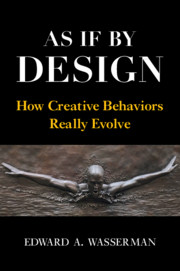Section 3 - Putting It Together
Published online by Cambridge University Press: 01 July 2021
Summary

- Type
- Chapter
- Information
- As If By DesignHow Creative Behaviors Really Evolve, pp. 285 - 311Publisher: Cambridge University PressPrint publication year: 2021



